Imagine living in a national park in Italy, surrounded by nature and all its wild beauty. Where you can hear birds singing and marvel at the spectacular scenery, right on your doorstep. A place where going out for a walk takes you up mountains, through forests, past waterfalls and wildflower meadows.
In this article, we explore some of Italy’s best national parks and how much it might cost you to live in one.
FIND your dream Italian property here.
Italy’s protected areas
In Italy, there are 871 protected areas covering 3 million hectares. Half of this is made up of 25 National Parks, and the rest are regional nature parks, nature reserves, wetlands, and other special nature areas worthy of conservation and protection. Due to Italy’s diverse landscape, the scenery and wildlife also vary. Some National Parks are dominated by mountains and others are near the coast or large lakes.
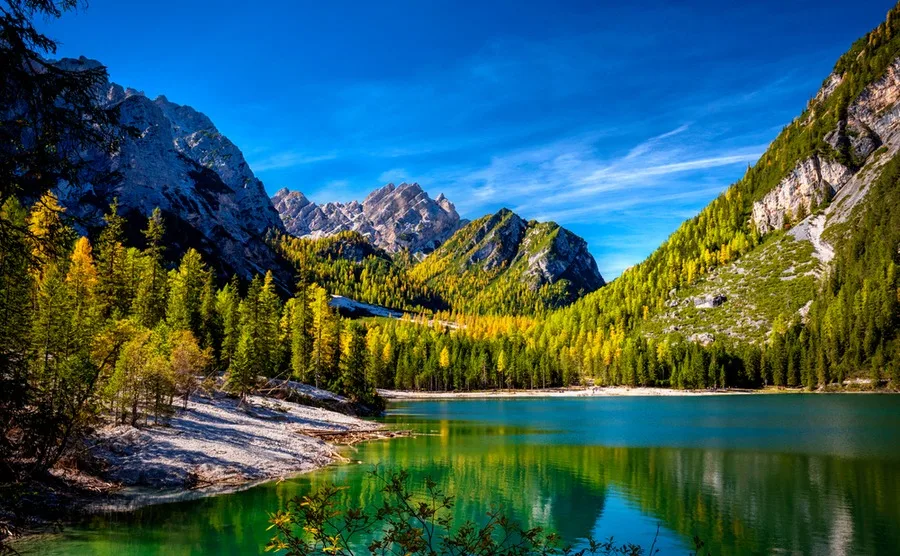
In Italy, there are 871 protected areas covering 3 million hectares.
Communities by the National Parks
Communities that live in or near protected areas tend to be very aware of the importance of natural heritage, history, architecture and local customs. At town festivals, these communities come together to share traditional music, crafts and locally grown produce. Some villages even have visitor centres to share information about the park and suggest walking trails. These villages are also a good place to start your property search.
Getting out and about
Whether you enjoy hiking, cycling, skiing or even horse riding, there is plenty of space to get away from the crowds and experience the beauty of nature at a National Park. For the best views, you may also want to try climbing a mountain. Alternatively, you could enjoy relaxing pastimes such as painting, birdwatching or wildlife photography. You’ll find numerous recommended nature trails on National Park websites.
You’ll find numerous recommended nature trails on National Park websites.
National Parks from your armchair
Enjoying the great outdoors surrounded by nature is an experience that can’t really be replicated on the internet. However, The Ministry of the Environment has made a collaboration with Google, allowing street view to go off-road and along some of the most beautiful paths through Italy’s National parks. So far, they have mapped paths in the Abruzzo, Lazio and Molise National park. Plus, you can explore the National parks of Gran Paradiso, Sila, Val Grande and the Casentinesi Forests.
3 of Italy’s best National Parks
The Italian tourist board website has a section on Nature and Wildlife, which lists all the National Parks and protected marine areas. Let’s look at three of them to see what they have to offer nature-loving house buyers.
1. Parco Nazionale delle Cinque Terre – by the sea
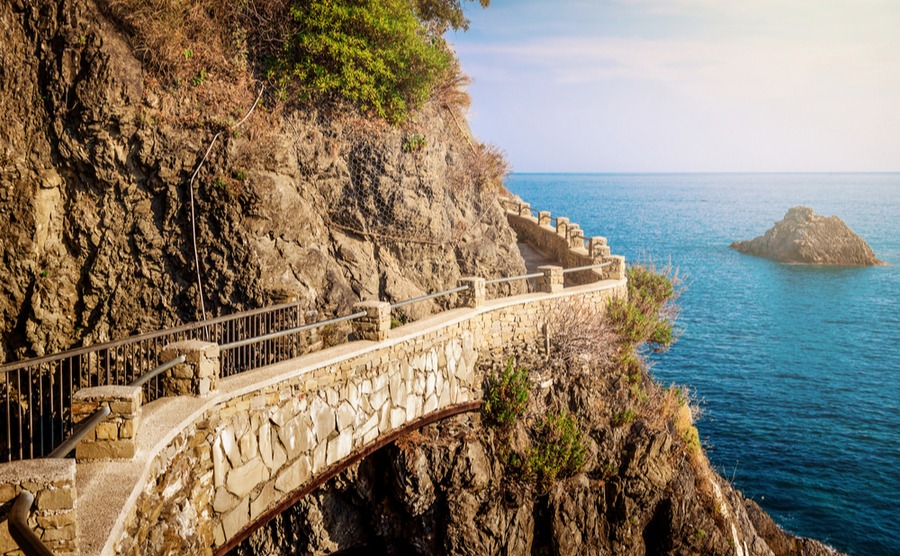
Pathway along the sea in Cinque Terre national park
Cinque Terre National Park is one of Italy’s smallest National Parks but also happens to be the most densely populated, with about 5,000 inhabitants distributed among five coastal villages. These beautiful villages are Riomaggiore, Manarola, Corniglia, Vernazza and Monterosso al Mare, and are comprised of pretty pastel-painted houses huddled together and vineyards that stretch across the hillside terraces.
Location:
In northwest Italy, in the region of Liguria, the Cinque Terre National Park covers a coastal area in the west of La Spezia Province.
Landscape:
The landscape is formed by steep rocks with the mountains shooting straight out of the sea. These mountains beautifully shelter the coastal villages from cold winds, creating a microclimate. The area is recognized for its scenery, history, culture and agriculture.
Over the centuries man has changed the natural environment by cultivating the steep slopes, supporting the terraces with long dry-stone walls. It is this characteristic feature that won Cinque Terre World Heritage Status by UNESCO.
Exploring the park:
The network of 48 paths stretches for more than 120 kilometres. You can choose routes that take you through ancient settlements, sanctuaries and churches, terraced vineyards and nature trails. Some are more challenging than others, so there is something for all abilities.
Want a holiday home in Italy but worried about the cost? Why not pool finances and buy with family? Explore our guide, Buying Abroad with Family.
Wildlife:
The microclimates experienced along the Cinque Terre coastline create an environment suitable for many types of flora, from lavender to chestnut trees. Some of the birds you might see along the cliffs are the yellow-legged gull, cormorant, common tern, manx shearwater and the peregrine falcon.
The National Park is also home to chaffinches, European greenfinches, Sardinian warblers and starlings. Those who venture up to the pinewoods and holm oak forests might even spot a jay or a woodpecker. If you hear something scuttling in the grass, it’s probably just a lizard. You’ll likely spot geckos on the drystone walls, and badgers, foxes, beech martens and weasels are also residents of the park.
Living in the park:
The hiking trails and coastal villages are very popular with tourists, so property here can easily be rented out for good rates. This is, however, reflected in the property prices. A small apartment in Vernazza might cost €330,000, but if you go inland there are quieter villages and rural properties for sale at lower prices. In some cases, you can even get panoramic views of the sea and coastline, such as at San Bernardino, where a three-bedroom house can cost around €290,000.
2. Parco Nazionale d’Abruzzo, Lazio e Molise – Central Italy
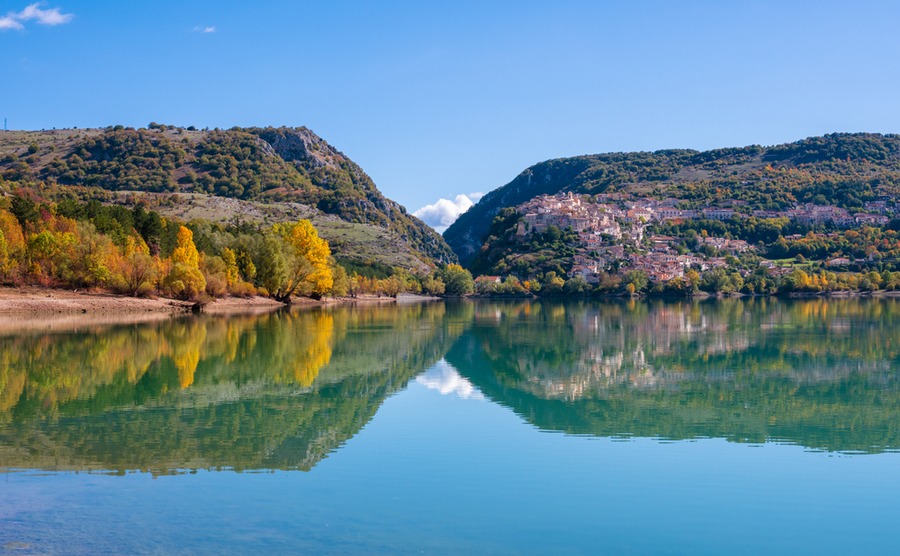
National Park of Abruzzo, Lazio and Molise
Abruzzo, Lazio e Molise National Park is famous all over the world, as a superb example of nature conservation and environmental protection.
Location:
Located just a couple of hours from Rome, the National Park is mostly in the Abruzzo region.
Landscape:
This is the oldest park in the Apennine mountains and covers an area of 496.80 km2 (191.82 sq miles). There are seven mountains over two thousand metres high within the park. The protected area is around two thirds beech forest, though many other tree species grow here, including silver birch and pines.
Exploring the park:
The park covers such a vast area that there are as many as 140 suggested routes suitable for hikers and horse riding. There are even designated trails for mountain biking and dog walking.
No quarantine on return for double-jabbed Brits! Get your free Italian Viewing Trip Guide today.
Wildlife:
The most famous animals in the park are the Marsican brown bears, which live in the forests and visit the high-altitude grasslands at the edge of the woods. The hardest animal to spot is the Apennine wolf because of its nocturnal habits. However, you might spot red deer and roe deer. Thanks to careful protection, the Apennine chamois have been saved from extinction and now roam the higher meadows and steep rocky areas where they feel safer from predators.
There are numerous birds and smaller animals to spot in the park too, but the king of the birds is the golden eagle, with a wingspan of over two metres. And if you love wild flowers and plants, there is a comprehensive selection to look out for, from primroses to a rare orchid.
Living in the park:
The Abruzzo, Lazio and Molise National Park is also home to numerous villages and small towns which have largely preserved their character. Traditional ways of life can still be seen, and you likely feel like you have travelled back in time. The twenty-four municipalities that are in the park are described on the park’s website. 2 bedroom townhouses in Pescasseroli cost from €110,000 and detached houses from €180,000.
3. Parco Nazionale Gran Paradiso – Mountain views
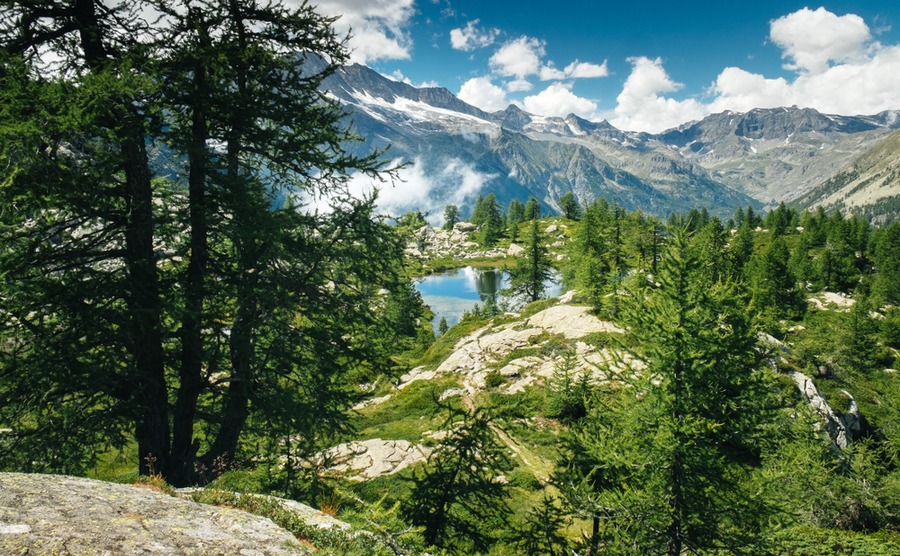
Gran Paradiso National Park
In 1922, Gran Paradiso National Park was the first national park to be established in Italy. Earlier than this, in 1856, the area was designated for the protection of ibex, which now number almost 2,800. Gran Paradiso is one of the best-known parks in Italy and the world, due to the way it safeguards the biodiversity of this wild area.
Location:
The park is nestled in the Alps in the northwest corner of Italy, about an hour’s drive from the city of Turin. It’s in the small autonomous region of Aosta Valley on the border with the Piedmont region and close to France.
Irresistible Italian properties are waiting to be found.
Landscape:
Gran Paradiso is in the Graian Alps, so you can expect lots of Alpine terrain. The land level ranges from 800 metres at the bottom of the valley to 4,061 metres at the peak of Gran Paradiso mountain. Larch and fir woodlands, beech and chestnut trees, wide alpine grasslands, rocks, and glaciers make up an ideal setting for a variety of wildlife. The wild landscape is breath taking and full of beautiful highlights such as the waterfall at Lillaz and the Paradisia alpine botanical garden.
Exploring:
There are more than 700 km of marked hiking trails, but if you prefer pedal power, there are several suggested cycle routes too. In winter, you can also cross-country ski, downhill ski, and go ice climbing.
In the valleys of Cogne, Valsavarenche and Val di Rhemes you will find useful visitor centres. Valle di Cogne is the most accessible to visitors and is very popular with walkers.
Don’t spend any money on your move abroad until you’ve read The Currency Guide to Emigration, free to download.
Wildlife:
The higher meadows are home to thousands of Alpine ibex and you might also see Golden eagles circling overhead. Although it’s unlikely you’ll see the wolves, you might hear them at night. Marmots are also difficult to spot as they hibernate for 9 months of the year. However, in spring you could be treated to the sight of alpine chamois in the vicinity of Alpe Azaria.
Living in the park:
The Valle d’Aosta is Italy’s smallest region with a population of less than 126,000. In the most sort after areas near the park, properties do not often come up for sale which can result in high prices. An apartment in Cogne sells for over €300,000, but it is a lovely village with beautiful stone chalets with wooden balconies overflowing with flowers and offering jaw-dropping mountain views. On the other hand, the National Park is also close to the Piedmont region where properties can be found for less than €100,000.
Sparking an interest in nature
The popular and long running TV series “Geo” has nature at its centre and recognises the close link between Italian traditions, preserving the environment and the future of our planet. It has inspired many Italians to be more aware of the amazing natural world outside their cities. Many viewers now support environmental organisations and volunteer to help conserve nature.
Play your part
When you have a property in Italy you can help by simply encouraging nature around your home. Ledges for nesting, wildflower areas, bat boxes, beehives and leaving gaps in stone walls for lizards are just some of the things you can do. When you move to Italy, becoming a volunteer could be a good way to meet people and animals, as you get involved in activities such as transporting and caring for injured animals, beach cleaning or even dressing up as a panda.
Alternatively, you could join one of the big environmental associations to meet like-minded people. The WWF Italy is the largest environmental organisation in Italy and is part of the international network WWF (World Wildlife Fund), the largest organization dedicated to the preservation of nature.
Bird Protection
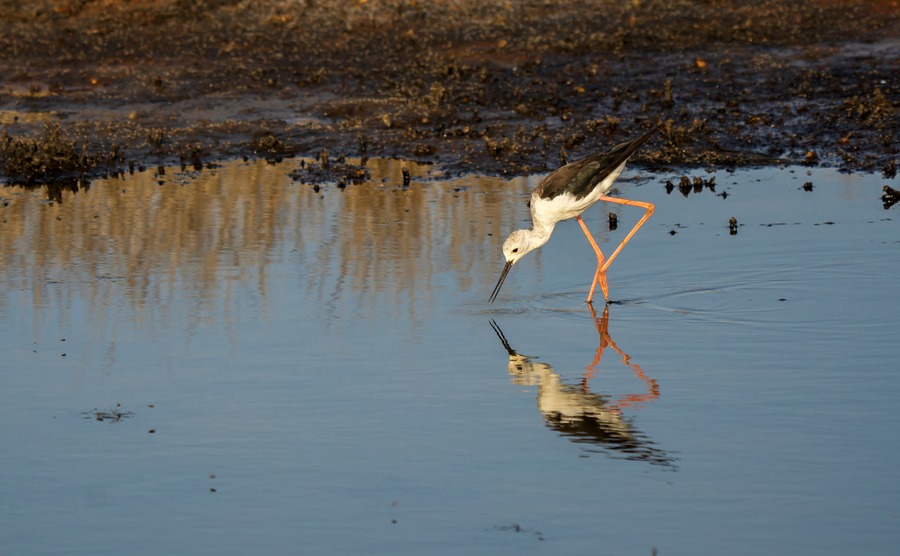
The Italian Bird Protection League (LIPU) aims to conserve nature through environmental education and the protection of Italian biodiversity.
The Italian Bird Protection League (LIPU) is an Italian environmental association, founded in 1965, with the main purpose of combating the elimination of birds. However, it also aims to conserve nature through environmental education and the protection of Italian biodiversity. Their 58 structures are visited annually by 200,000 people and they treat over 15,000 injured animals a year.
To find out more about the wildlife that can be found in Italy read Wolves, bears and flamingos – the wildlife of Italy, here on Italy Property Guide.











